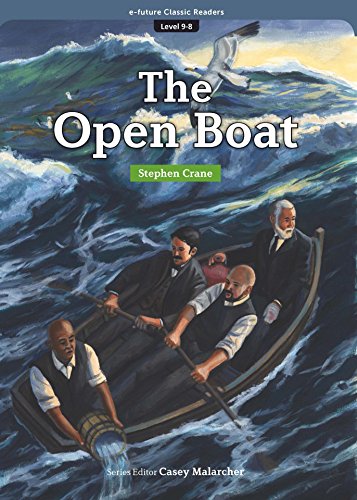
2 Sentence Summary
Stephen Crane, an American writer and poet, based his story “The Open Boat” on a real-life experience he had while working as a newspaper journalist in 1896. The story is about four men, including Crane, who were stranded in a lifeboat for thirty hours after their ship sank off the Florida coast.
Summary Read Time: Less than 3 minutes
Actual Book Length: 64
First Published in: 1897
Below is the detailed yet quick summary of the book:
Part 1 – When Hope Meets Despair
The Open Boat is a story about four men who are stranded in a lifeboat in the middle of the ocean after their ship sinks. The four men are the captain, the cook, the correspondent, and the oiler. They all struggle to survive as they row towards the coast of Florida. The story shows the struggle for survival, the fear of death, and the deep bonds that can form between people in times of crisis.
The men argue over whether they are close to shore and debate whether they are nearing a lighthouse or a life-saving station. They are constantly at the mercy of the violent waves that threaten to capsize their small lifeboat. They feel hopeful when they see the Mosquito Inlet lighthouse in the distance, but they become discouraged when they realize that the nearby life-saving station is abandoned.
Despite the harsh conditions, the men form a brotherly bond and look out for each other. They respect the captain, who gives them orders and helps them survive. As they row towards shore, they become increasingly exhausted and begin to feel hopeless. They wonder why they came so close to shore only to be swallowed by the sea.
Part 2 – Rowing Against the Odds
As they wait for rescue, they smoke cigars and drink from their water supply. When they realize that the life-saving station is abandoned, they become angry and feel like they have been abandoned by the world. The captain tells them that they must save themselves while they still have the energy. All of them exchange addresses of loved ones in case they don’t all make it to shore.
The men continue to row towards shore, but the waves grow too large for the lifeboat to linger safely. They are pushed one way by the tides and another by the wind and waves.
The men take turns rowing and lying in the bottom of the boat, trying to rest as much as possible. The correspondent thinks about the possibility of drowning and wonders if it would be peaceful.
In the end, the men make it to shore, but they are changed by their experience. They have faced death and survived, and they know that they will never forget this experience. The story is a powerful reminder of the fragility of life and the importance of human connection in times of crisis.





